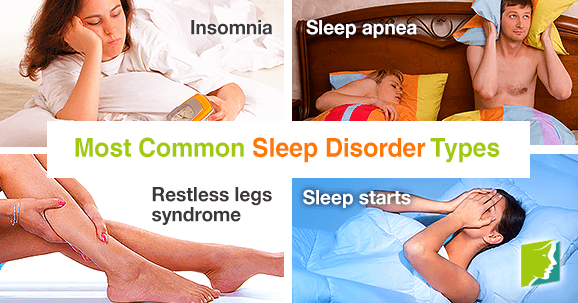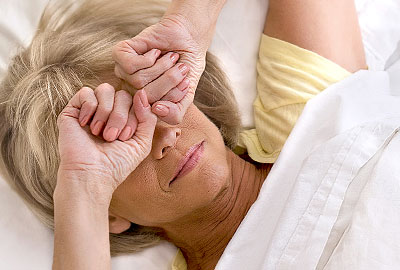Many women will experience a sleep disorder at some point during their menopausal transition, even if they have always been deep sleepers. After a long day of battling a series of menopause symptoms like mood swings and low libido, you also may find that you can't stay asleep. The sleep disorders listed below are typically due to high levels of stress, excessive alcohol and caffeine intake, obesity, and exercising or eating right before bed. Menopausal hormonal imbalance can make you much more sensitive to these triggers and prompt more frequent sleep disruption.
Insomnia
Insomnia includes not being able to fall asleep, sleeping only for short periods of time, lying awake in the middle of the night, and waking up early and not being able to go back to sleep. There are two types of insomnia: situational insomnia lasts one day to three or four weeks, and chronic insomnia lasts more than a year.
Unfortunately, around 12% of Americans report having chronic insomnia, and it can really get in the way of life by causing fatigue and difficulty concentrating. This symptom is often stress-related, or in menopause, it may be connected to anxiety or night sweats.
Sleep Apnea
Sleep apnea can be anything from disruptive to dangerous. Apnea means "not breathing," so sleep apnea is when your sleep is interrupted because your airway becomes closed off. This can happen up to 30 times each hour overnight. Sometimes, it is only a few seconds, but other times, you may stop breathing for up to two minutes.
In either case, the brain gets the message that it is not receiving oxygen and wakes up to open the airways again. Although sometimes you can sleep through this, often, patients will wake up gasping for air, and it can be extremely frightening.
Restless Legs Syndrome
Many women may be familiar with the sensations related to restless leg syndrome (RLS). It is a tingling, burning, and crawling sensation that tends to appear at night and wake you up. You feel the uncontrollable desire to move your legs; doing so can relieve the tingling feeling but keep you from a good night's rest.
Sleep Starts
This disorder is usually not chronic, but it is a strong enough jolt to ruin your sleep for a couple hours. Also known as "hypnogogic jerks," it is that abrupt falling feeling that startles your body for a moment and wakes you up. People usually experience this just as they are finally falling asleep, which can be devastating if you suffer from insomnia.
Whether you're not able to fall asleep to begin with or fall asleep easily but wake up for hours in the night, it can get in the way of your productivity during the day. This can be depressing and leave you exhausted. Fortunately, these symptoms can often be alleviated by lifestyle changes or counseling.
Sources
- National Institutes of Health. (2014). Sleep Disorders. Retrieved March 17, 2014, from http://www.nlm.nih.gov/medlineplus/sleepdisorders.html
- University of Maryland Medical Center. (2013). Adult Sleep Disorders. Retrieved March 17, 2014, from http://umm.edu/programs/sleep/health/sleep-disorders/adult#d




